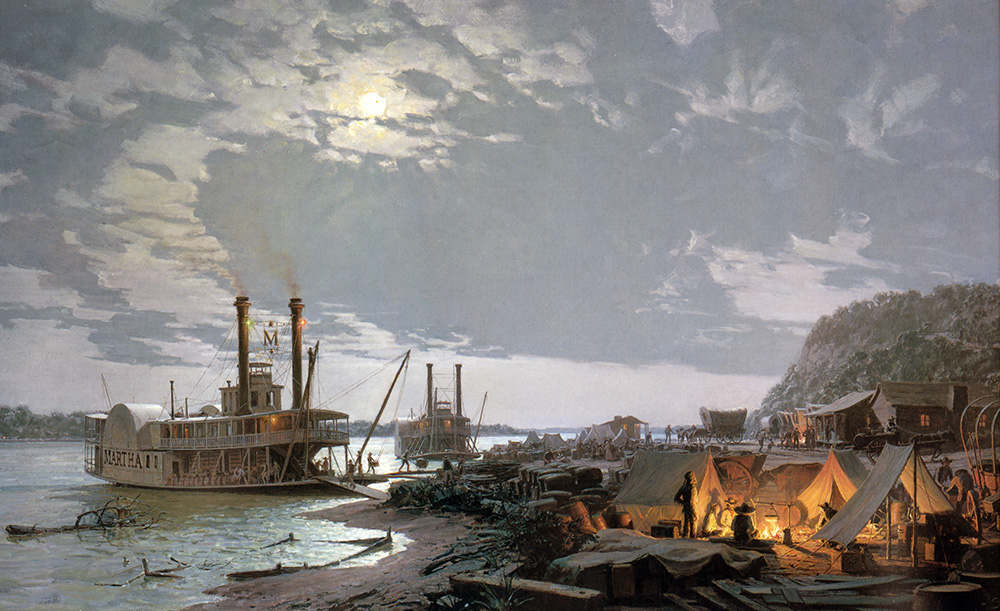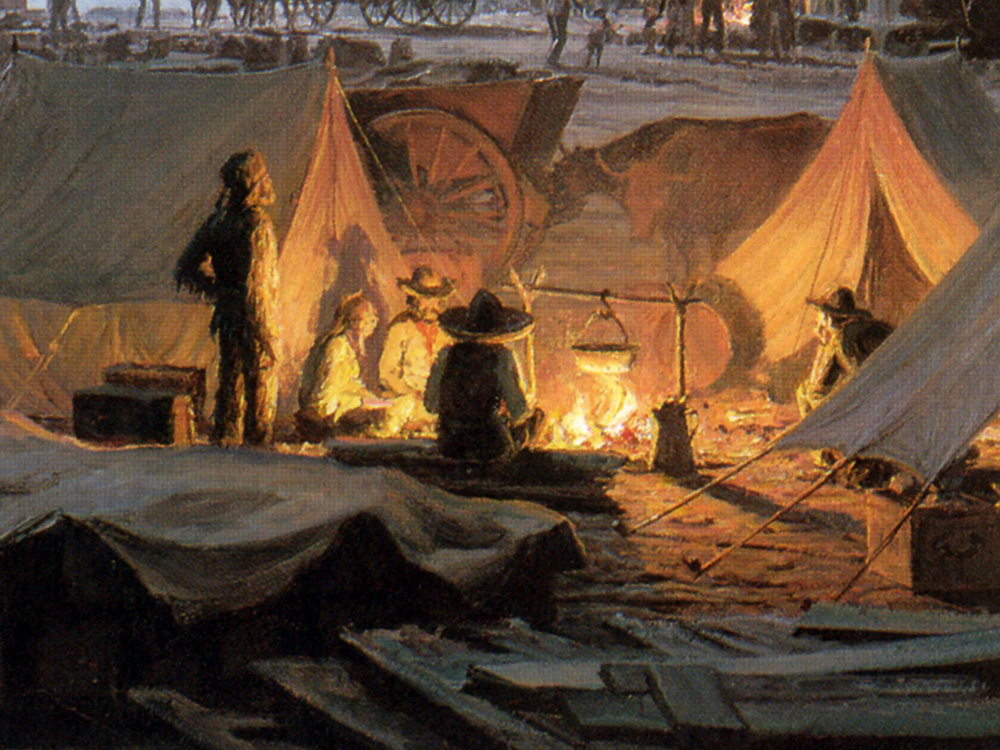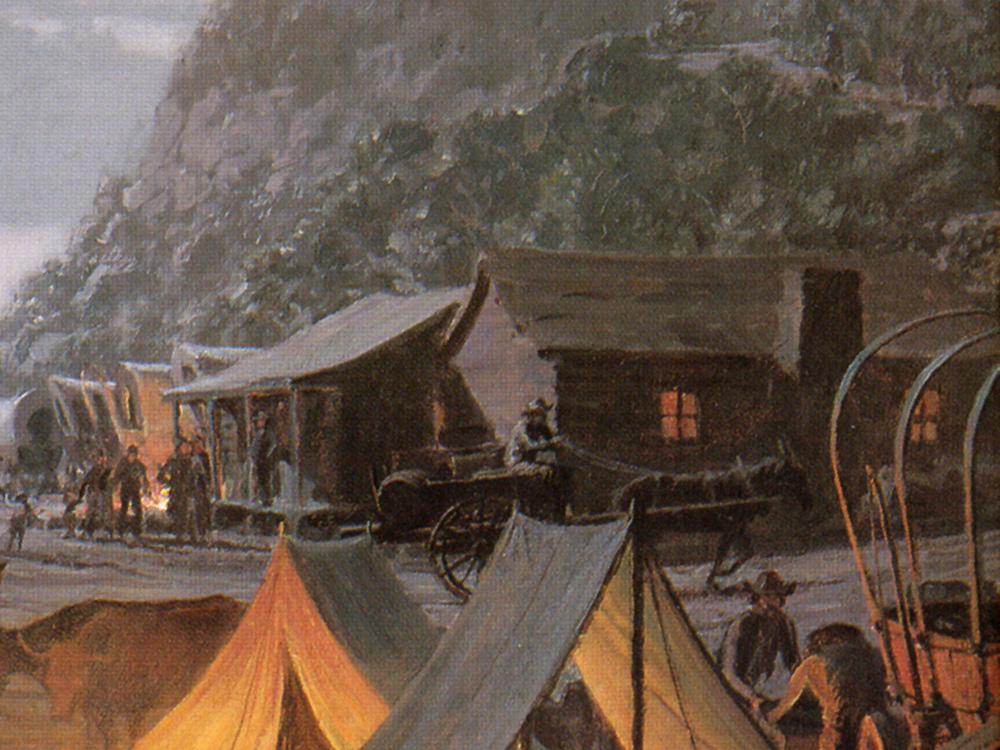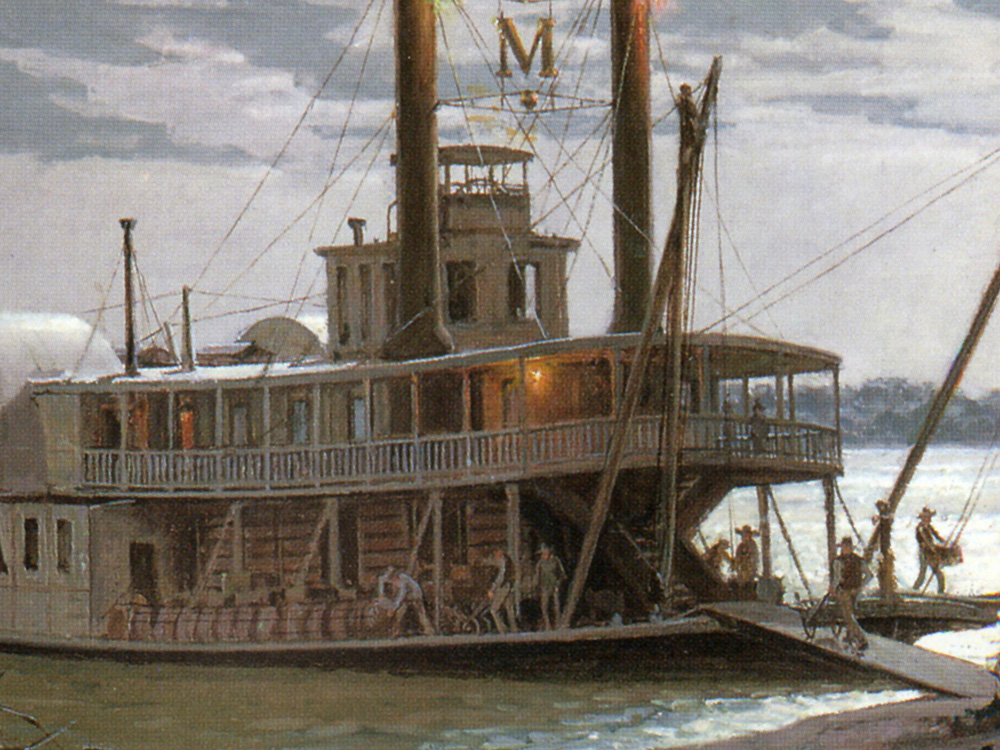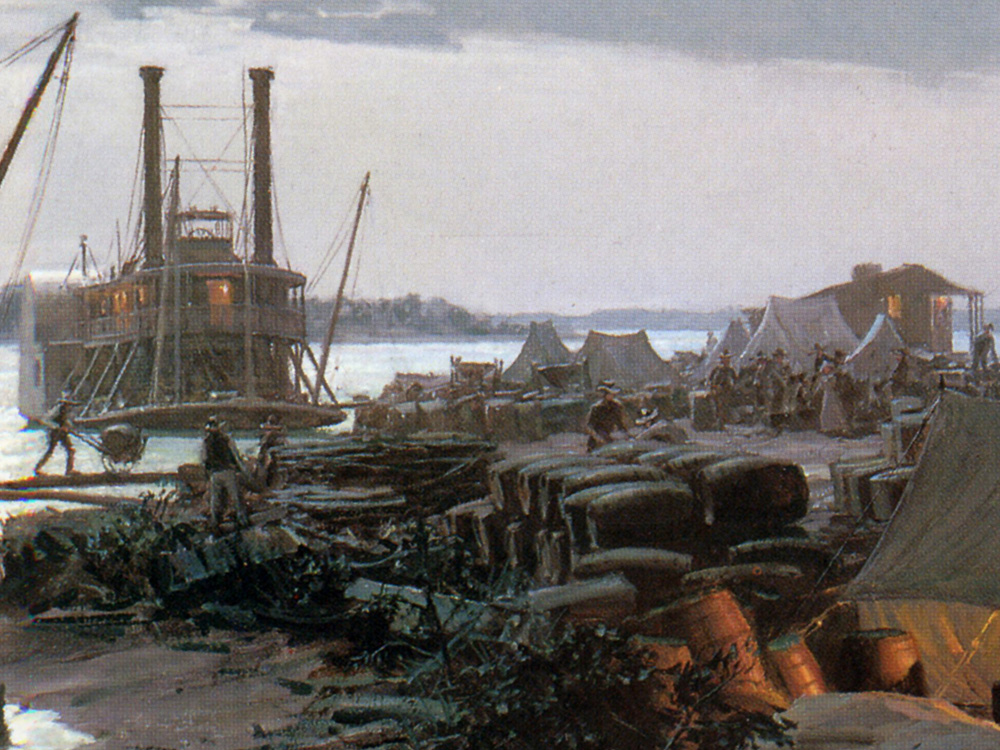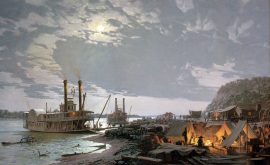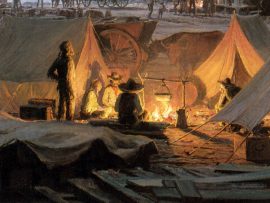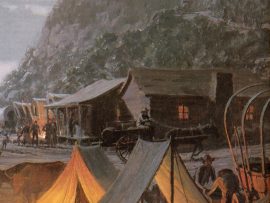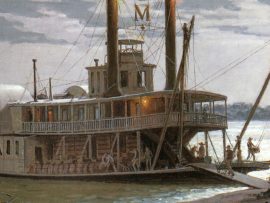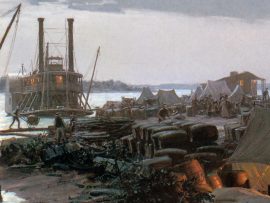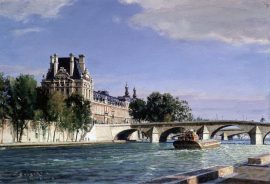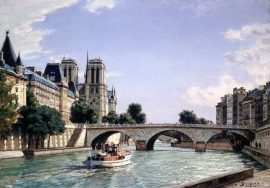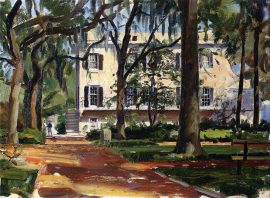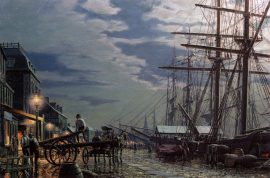Independence: Start of the Santa Fe Trail in 1842
$1,710.00 – $2,610.00
Going to Wayne… heading out to Wayne were the exuberant words heard in many barrooms of the United States beginning around 1830. The Wayne City Landing along the Missouri just downstream from the present Kansas City was one of the most historic locations in the settlement of the Old West.
About fiver river steamers made continual runs back and forth to Wayne City from downriver loading ports on the Mississippi. At the landing the finished goods would be discharged and loaded on the first railroad west of the Mississippi, a short-haul line with tracks of wood using flatcars pulled by oxen to take the cargoes into nearby Independence. From other areas – Westport and St. Joseph – the long overland routes twisted west and southwest.
It is common to think that all trails west were single tracks of immigrants bumping along in their covered wagons and shouting at their slow-moving herds of cattle. The Oregon Trail out of Independence was the route of the cattlemen and sobbusters. In a never-ending flow of one-way traffic, some settlers pushed on as far as Oregon, and others headed south along the California Trail, which branched off near the Snake River. This was the trail that was background to a thousand movies.
But the Santa Fe Trail was a two-way trading route from Missouri to New Mexico. There were comparatively few Indian attacks along this heavily traveled route. Hardware and dry goods moved south, while gold, silver, and furs were hauled back to Wayne Landing where the cargoes were loaded onto the waiting steamboats.
The Wayne City townsite was officially platted in 1847. There were only a few establishments: a livery stable, stores, a hotel, and some homes. It was named for Lieutenant Anthony Wayne, who was sent to the area in 1825 with a group of soldiers to settle matters with the Kaw Indians.
The Santa Fe Trail covered about 730 miles. The first stop was Council Grove, Kansas, the central point for wagon organization. The trail then bent across the Kansas Plains to the Arkansas River; following those banks to Dodge City, the trail took several routes, rejoining at Fort Union, New Mexico, and finally Santa Fe, where a lively frontier market existed.
The short railroad running out of Wayne City lasted only a few years. A sandbar filled in on the river, and the Wayne Landing came to an end as the steamboats started stopping at Westport Landing, which finally became Kansas City.
| Weight | 6.00 lbs |
|---|---|
| Catalog: | Stobart-073 |
| Artist: | John Stobart |
| Dimensions: | 19" x 32" |
| Edition: | 750 |

